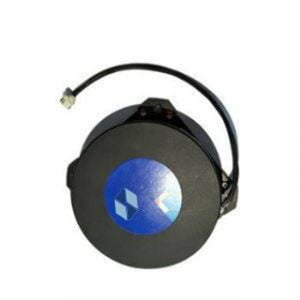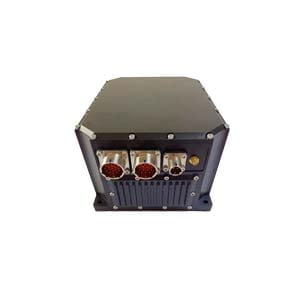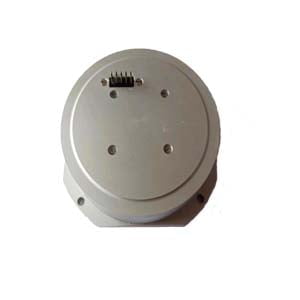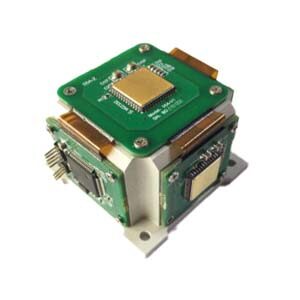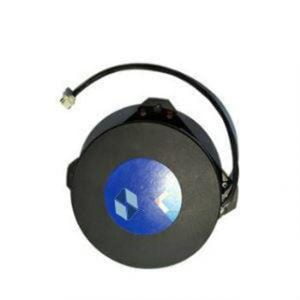As a universal and high precision measurement tool, fiber optic gyroscopes (FOG) have been proved by many projects. Different precision gyros have different application fields. The theoretical basis of FOG is based on Sagnac effect. It has excellent anti-interference ability, high reliability, fast reaction rate, fast start-up time, and can run for a long time and high intensity.
The main principle of fiber optic gyroscope: when the beam is advancing in a light guide fiber ring, if the ring channel rotates, the time required for the light to advance along the direction of the channel rotation is more than the time required for the opposite direction along the channel rotation, and the phase difference of the optical path is detected by the change of the optical path or the change of the interference fringe to measure the rotation angular speed of the optical path.
In recent years, there are different types of gyro inclinometer in the market, most of them use mechanical gyro, which has poor vibration resistance and shock resistance and is easy to be damaged in the harsh environment of oil drilling. Because the measuring method of mechanical gyro inclinometer is fixed point measurement, the attitude value can not be calculated in real time during the movement, so it is difficult to reflect the actual well trajectory, and the logging efficiency is greatly reduced. The FOG is an all-solid optical gyroscope, without rotating and frictional parts, and has the advantages of continuous measurement and adaptability to harsh mechanical environment. The fiber optic gyro continuous inclinometer with fiber optic gyroscope as the core component is mainly used to measure the trajectory of casing well and determine the plan of re-exploration and exploitation. In casing detection and directional perforation, the instrument azimuth value is determined. The conventional magnetic orientation instrument cannot achieve the above function requirements because of the magnetic shielding of casing. Fiber optic gyro continuous inclinometer is a kind of self-oriented instrument based on inertial measurement technology, which is high precision, resistant to shock and vibration, and not affected by magnetic field.
In the field of offshore oil exploration, Dynamic Positioning (DP) is mainly applied to offshore platforms, drilling platforms, (Floating Production Storage and Offloading, FPSO) and offshore operating vessels (such as platform support vessels, shuttle tankers and pipe-laying vessels). Dynamic positioning does not require the use of traditional anchorage, so it is more flexible, suitable for a variety of sea conditions and areas, and is increasingly becoming an essential support system for offshore oil operations. As an inertial device with autonomous navigation function, Fiber Optic Gyroscope has attracted wide attention from all walks of life since it was put into use, and has been applied to navigation, positioning, guidance and control and other fields, and has developed rapidly under the key support of countries. As global oil and gas demand grows and onshore oil decreases, offshore oil extraction is of great importance to the industry and economic development. In recent years, the focus of offshore oil development has gradually shifted to deep-sea oil fields, which also puts forward higher requirements for offshore oil development technology.
The traditional offshore positioning system is poor in accuracy and flexibility, which has a certain impact on the safety and efficiency of offshore oil operations. In the offshore area, the fiber optic gyroscope itself can realize the attitude measurement and dynamic positioning of the operating vessel. In deep sea areas, FOG can be used as the core device of the position measurement system to achieve more complex ship dynamic positioning, such as submarine construction vessels, pipe laying vessels and cable laying vessels used for offshore operations, shuttle tanker tugs used to support operations, etc. These vessels need FOG and its matching dynamic positioning system to achieve accurate operations. Thus, the operation error rate and rework rate can be reduced, the operation efficiency can be improved, the cost can be reduced, the construction period can be reduced, and the purpose of reform and innovation can be achieved to reduce cost and increase efficiency and rebuild the cost leading competitive advantage.
Looking for a low cost FOG with high performance? Get to know our ER-FOG-70, ER-FOG-70 Low Cost FOG Gyros is an important angular rate sensor, which has the characteristics of long life, fast start up, high precision, lower power consumption and wide dynamic range. It also plays an important role in aerospace, weapon navigation, platform stabilizer, medium precision inertial navigation, unmanned boat and other application fields.
Hope this article can let you have a certain understanding of fiber optic gyroscope. If you are interested in FOG related products and articles, please read the related products and related articles below.
More Technical Questions
1. Principle and Application of Fiber Optic Gyroscope
2. Fiber Optic Gyroscope: current status & development trends
3. Do You Know Fiber Optic Gyroscope and Its Typical Applications?
4. Specifications and Features of Fiber Optic Gyroscopes
5. The Working Principle of FOG
6. MEMS and FOG: How Should you Choose Inertial Navigation System?
Products in Article
